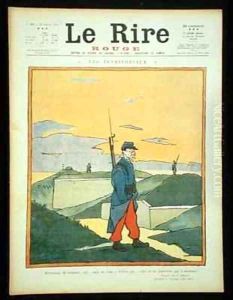Georges Delaw Paintings
Georges Delaw, born in Sedan, France on September 26, 1871, was a French illustrator and caricaturist known for his work during the late 19th and early 20th centuries. His full name was Georges Louis Joseph Delaw, and he was active during a vibrant time in French art, when the world of illustration was flourishing alongside developments in print technology and the popularity of periodicals.
Delaw showed an early interest in art and pursued his passion with studies that would eventually lead to his significant contributions to French illustration. He studied at the Ecole des Beaux-Arts in Paris, which was a hub for many aspiring artists of the time. His style was characterized by a blend of humor and keen observation, and he became well known for his caricatures and satirical drawings. Delaw's illustrations often appeared in popular magazines and journals, such as 'Le Rire' and 'L'Assiette au Beurre', which were famous for their satirical content.
In addition to his work in satirical illustration, Delaw was also known for his posters and contributions to children's literature. His illustrations for children's books are particularly noted for their charm and wit, and they often reflect a sense of fantasy and whimsy. Delaw's work in this genre contributed to the rich tradition of French children's book illustration, an area that has produced some of the most beloved and enduring images in the field.
Despite the popularity of his work during his lifetime, Georges Delaw remains a lesser-known figure in the pantheon of French artists. He worked during a period that was dominated by a number of illustrious contemporaries, which may partly explain why his name is not as widely recognized today. Nonetheless, Delaw's contributions to the world of French illustration and caricature are significant, and his body of work is still appreciated by collectors and scholars of the period.
Georges Delaw passed away on January 27, 1938, leaving behind a legacy of work that continues to be studied and enjoyed by those interested in the art and history of illustration. His art captured the spirit of his times with humor and skill, reflecting the social and political atmosphere of early 20th-century France through the unique lens of his artistic vision.
